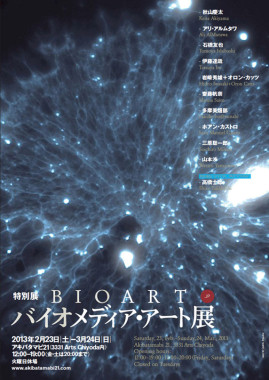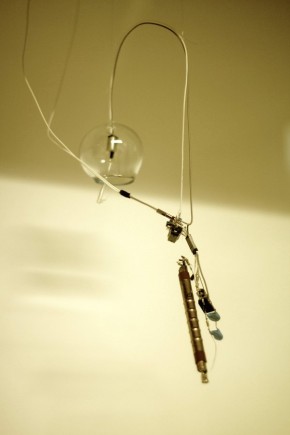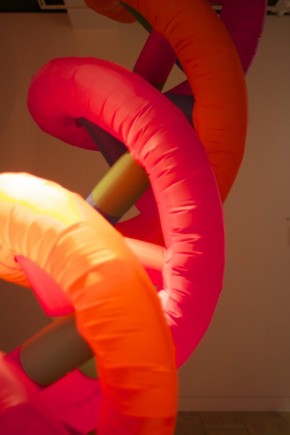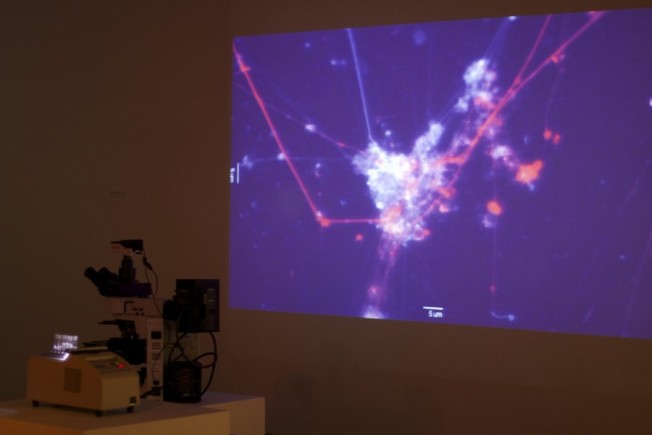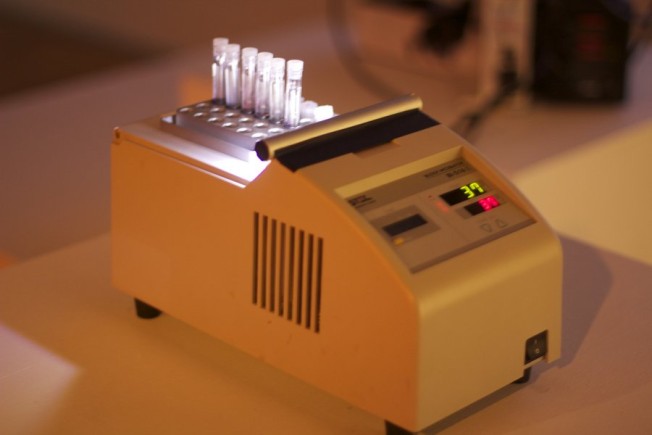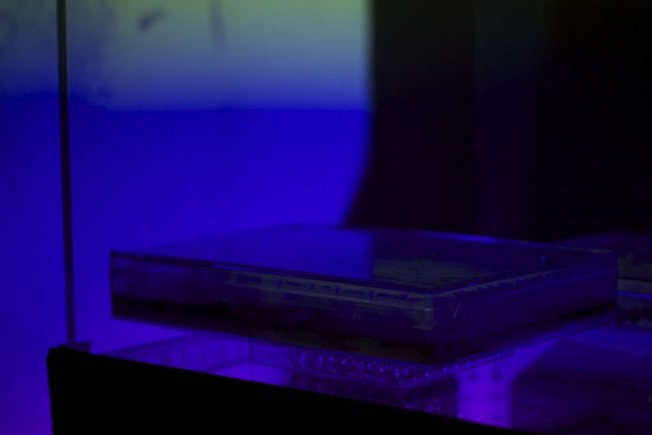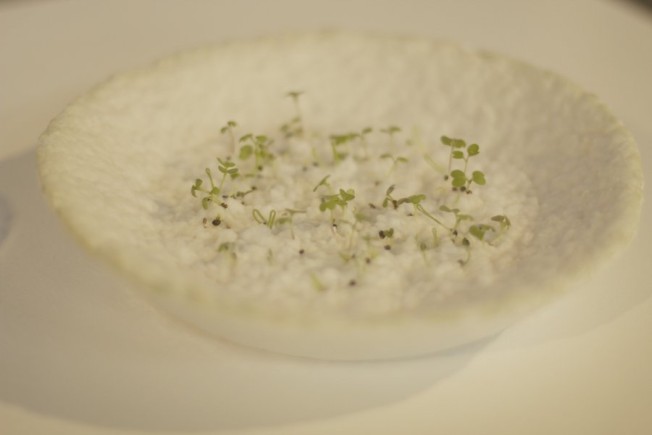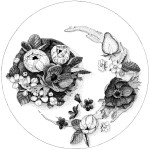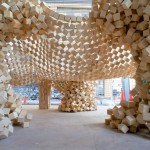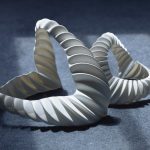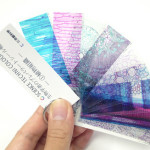Bio Media Art currently open at Chiyoda 3331 (through 3/24) is a compact introduction to the BioArt Scene in Japan. The line between Art and Science is hazy; Artists create – so do Scientists, both research and experiment, gather, present and analyze: both can seem obscure to the man on the street.
So what exactly is Bio Media Art? Perhaps one of the biggest questions is whether BioArt is Art that uses biotechnology and living tissues as materials or whether the inclusion of work that borrows from the imagery and language of science can be considered BioArt? This exhibition is more of the latter as the inclusion of the word Media suggests. Perhaps one of the most recognizable and controversial images of “BioArt” is Eduardo Kac’s piece “Alba” – a rabbit which was implanted with a jellyfish gene GFP (Green Fluorescent Protein) that made it glow green under certain light. For some critics, the idea of using animals and altering them for the sake of Art is unethical. Controversy still surrounds the idea of using living tissue for Science or Art – but for Scientists there is some debate over what matter actually is considered to be alive.
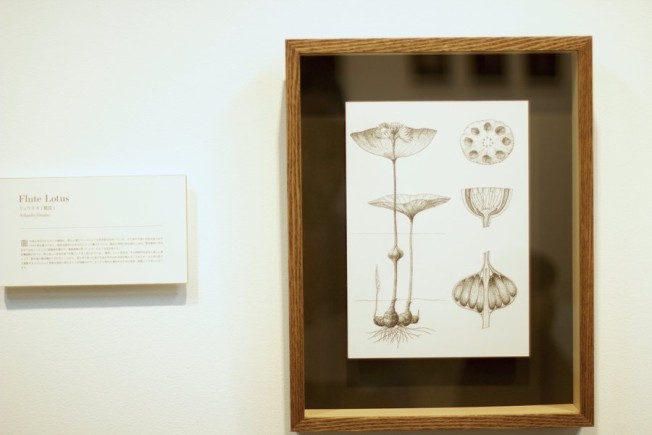 “Acoustic Botany” (2013) by Keita Akiyama | all photos by Hanako Kakuta
“Acoustic Botany” (2013) by Keita Akiyama | all photos by Hanako Kakuta
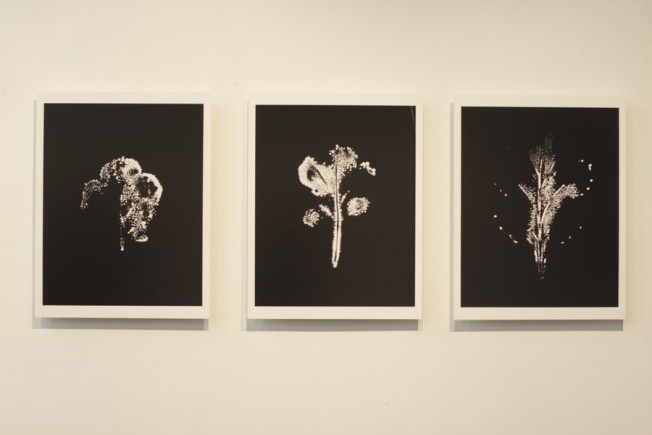 Wataru Yamamoto uses Kirlian photography (or “electrophotography”) to observe the aura of plants.
Wataru Yamamoto uses Kirlian photography (or “electrophotography”) to observe the aura of plants.
Left: “Suzu” by Mihara Soichiro | Right: “Kinetic DNA” by Shiro Takahashi
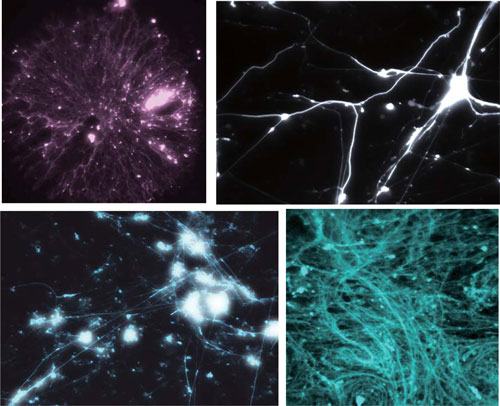 “Impulse” by Juan Manuel Castro
“Impulse” by Juan Manuel Castro
Colombian born but Tokyo based BioArtist Juan Manuel Castro shows impulse (above) – organic micro structures (lipid membranes) that form flexible bio architectures. Developed with Dr Taro Toyota of the University of Tokyo. His installation contains a microscope and various equipment that sit next to a projection of the structures. Speaking to Castro he said “ I am very interested in the possibilities of bio architectures – for me these cells are very beautiful and people do not realize how much beauty there is in nature already, I want to show them”.
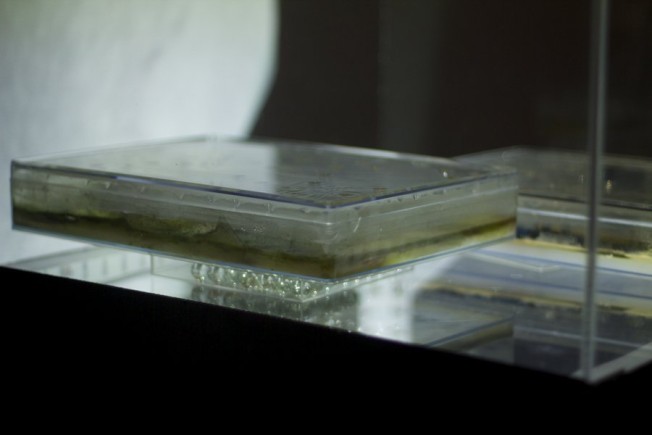 Biogenic Timestamp Prototype 2.0 by Hideo Iwasaki and Oron Catts
Biogenic Timestamp Prototype 2.0 by Hideo Iwasaki and Oron Catts
Bio Media Art is subtler in its approach. The small show is nestled in the corner of the second floor of the multi faceted Arts Center and has been organized with Tama Art University in conjunction with the Tokyo based Iwasaki lab and Metaphorest who hosted the “Godfather” of BioArt – Joe Davis, in 2011. Students exhibit alongside artists such as Waseda University professor and artist Hideo Iwasaki the founder of the Iwasaki Lab and the work is a mix of the conceptual and the visceral.
Iwasaki developed his work Biogenic Timestamp: Prototype 2.0 with Oron Catts – it shows the cycle of cyanobacteria, exhibited in a clear glass box, and projected onto the wall we can see one of the earliest forms of life. The bacteria interacts and decomposes within a set of circuitry, here the beginnings of life and the physicality of technology form a new, changing eco-system and an image of the past and the future.
Other work feature scientific methodologies with a twist – Kirilian photography capturing the beauty of the shape and form of leaves and water (Wataru Yamamoto 光の葉 /The Light of leaves), Scientific looking drawings document imaginary synthesized plants (Keira Akiyama – Acoustic Botany) seeds make plates (Hana Saito Seed Dish ) and in the corner a small fusen (Soichiro Mihara – Suzu) is connected to a Geiger counter chiming now and then – a reminder of the still unresolved Fukushima nuclear situation.
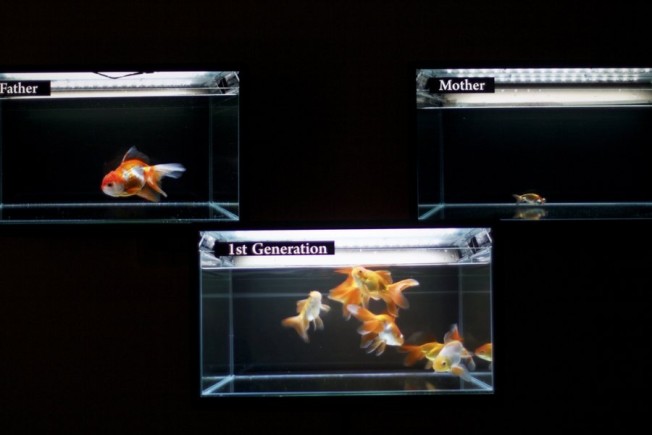 Tomoya Ishibashi reverse engineers goldfish, “freeing” them from their man-made breed
Tomoya Ishibashi reverse engineers goldfish, “freeing” them from their man-made breed
 3D humanoid bonsai by Ali Almutawa
3D humanoid bonsai by Ali Almutawa
If you are expecting Stelarc like performances then the show might not quite be what you are expecting. Japan is at the forefront of many technological developments and this is still quite a new field. The show gives you a good idea of what is happening in Japanese Art Science departments and opens up a space for dialogue – biotechnology and media are here to stay – are we ready for them?

